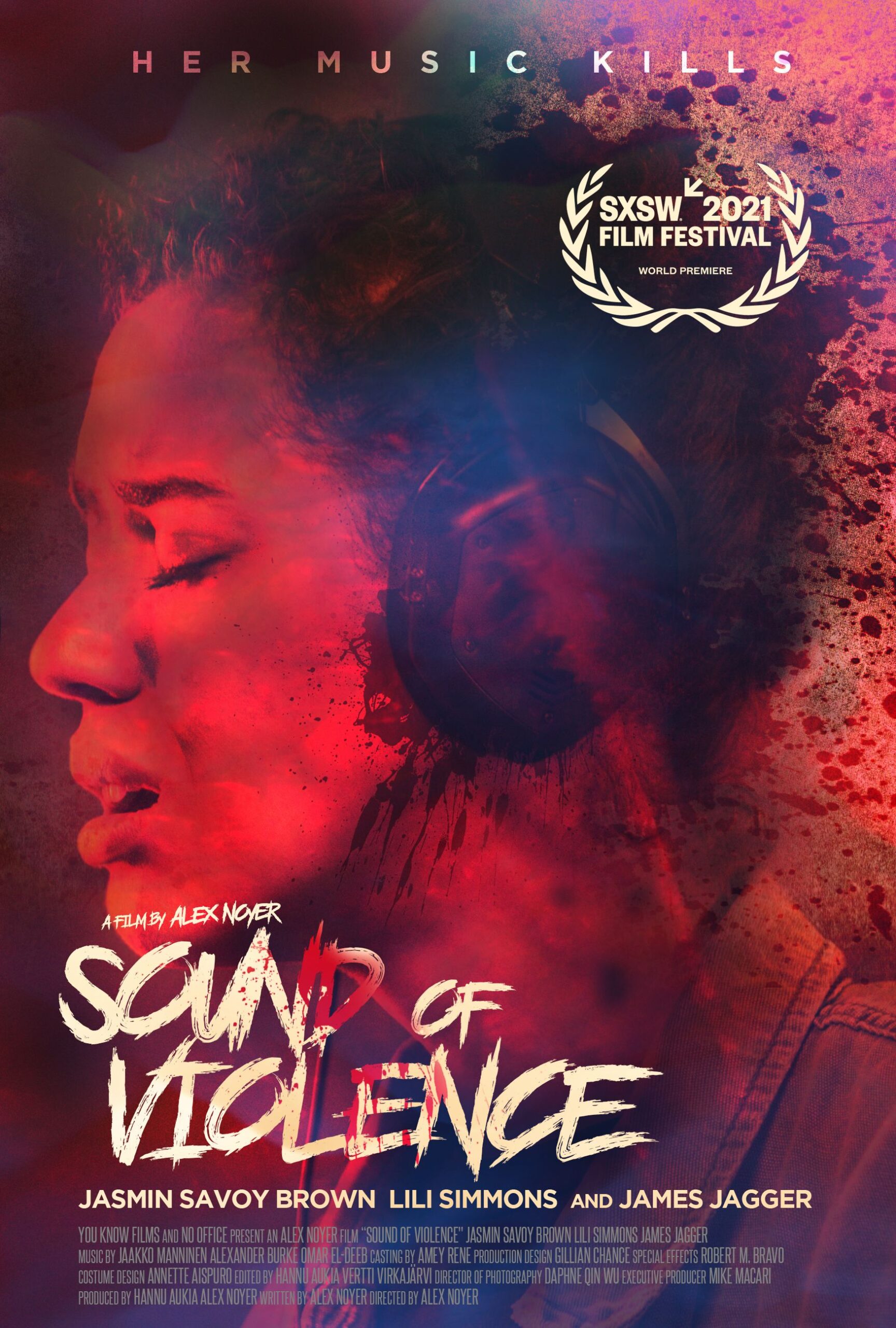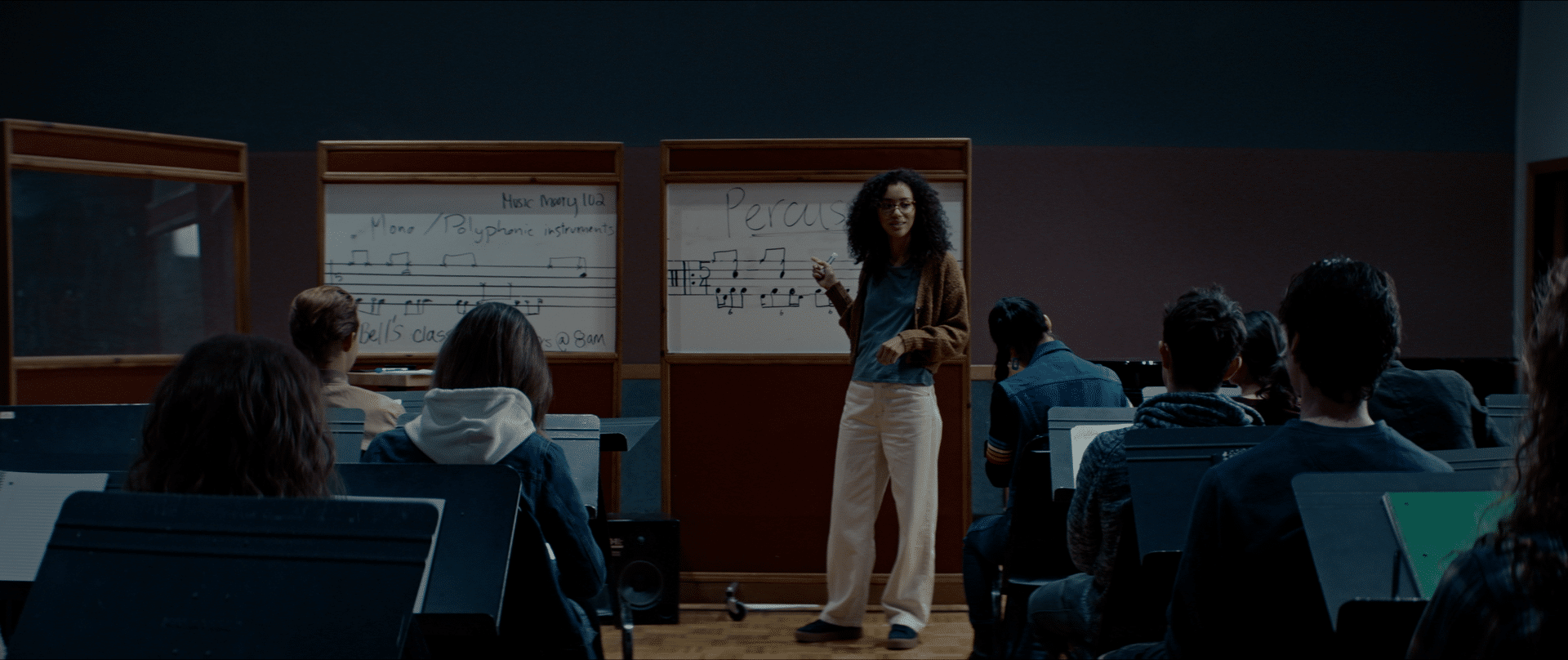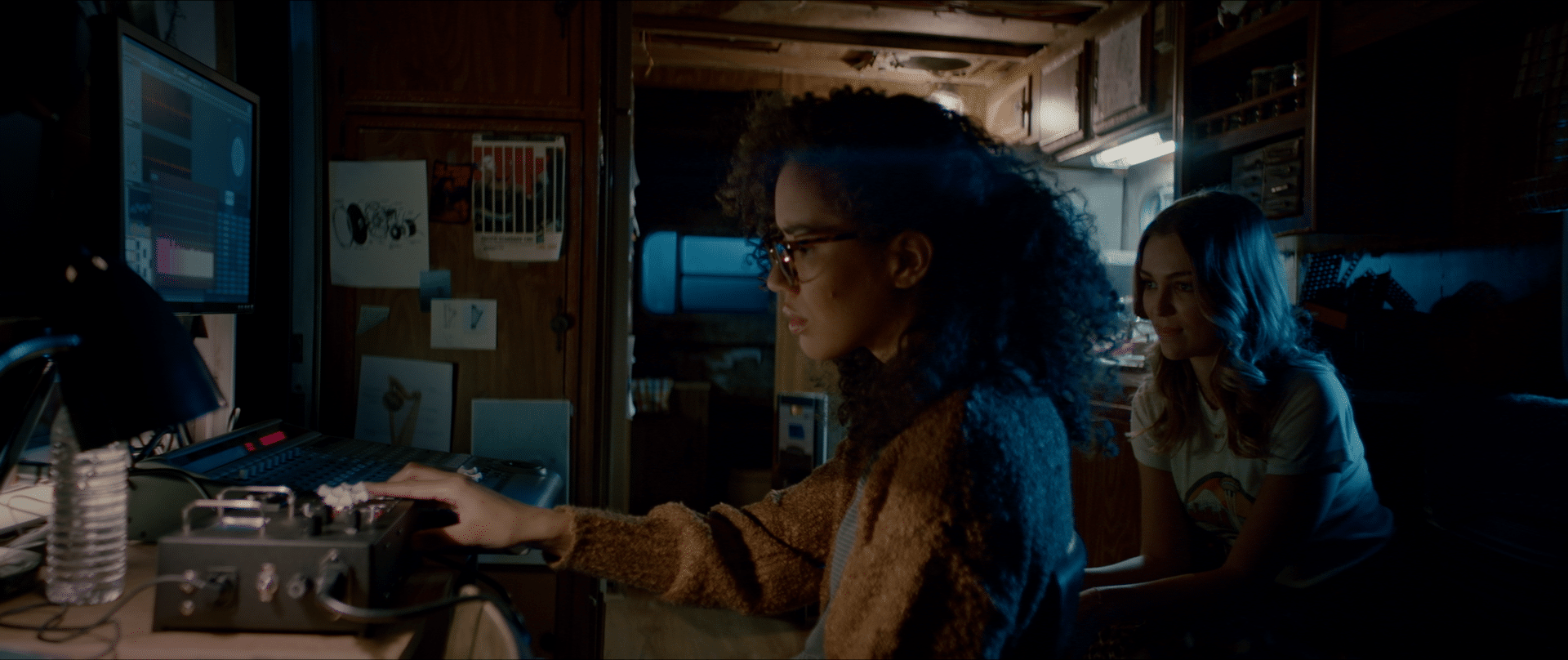Want to hear more from the actors and creators of your favorite shows and films? Subscribe to The Cinema Spot on YouTube for all of our upcoming interviews!
Managing editor & film and television critic with a Bachelor's of Arts in English Literature with a Writing Minor from the University of Guam. Currently in graduate school completing a Master's in English Literature.
In 2021, movie-goers would think that the horror genre has run out of ideas. Actually, this belief is untrue. I got to see Alex Noyer’s Sound of Violence as part of my coverage of the South by Southwest (SXSW) film festival, and let me just tell you: Wow! I have a lot of great things to talk about in regards to this horror story.
Plot Summary
The synopsis of the film is as follows:
A young girl recovers her hearing and gains synesthetic abilities during the brutal murder of her family. Finding solace in the sounds of bodily harm, as an adult, she pursues a career in music composing her masterpiece through gruesome murders.
Alexis Reeves (Jasmin Savoy Brown) is the beautiful female protagonist in her mid-to-late 20s who gains superhuman abilities. With her roommate/friend Marie Sotker (Lili Simmons) and Marie’s boyfriend Duke (James Jagger) to help, you would think Reeves would fare well, right? Think again.
Discussion
Let us begin discourse by honestly saying: Reeves is a voyeuristic sadist. She is barely hurt herself save for perhaps one scene that may take place during a dream, although that is up for the viewer’s interpretation. Brown plays her character so well that I am often left in shock and awe at her performance. (If you aren’t too familiar with the actress, she previously appeared in HBO’s The Leftovers and PlayStation and Insomniac’s Spider-Man: Miles Morales. She will later appear in next January’s Scream film).
This movie is like Neveldine and Taylor’s Crank and Crank: High Voltage but with sound vibrations as this main character’s high. Additionally, I would also argue that it is a modern-day version of Michael Powell’s Peeping Tom in that Reeves documents her victims’ screams of pain and sounds of death as they happen. Whenever she doesn’t afflict pain upon others, she loses her hearing, and this is an on-and-off conflict that continues to happen throughout the film. The ending may be troublesome because we are unsure if this issue is ever resolved at all.
Alexis Reeves and Marie Sotker
Sound of Violence also does great at painting its female characters as human beings with their own strengths and flaws. Reeves and Sotker have sexual tension between each other but nothng is done about it until its too late. The two women are still experiencing and experimenting with life in their own ways, and Jagger’s character Duke fails drastically at getting in their way albeit this being written into the story with logical reasoning. Because of this, Brown and Simmons pass the Bechdel Test with flying colors.
The two characters display a great juxtaposition of what is morally good and what is morally bad. When we first see Reeves and Sotker’s little project, the latter says, “[P]eople have rules, the most important being we respect their limits.” I wonder what made Reeves remember that this proclivity to defy her own limitations was always there at her disposal. Were there any points in her life — between when she was a child and the present — that she had to have recalled this fact about herself? Or could we say that her psyche had always locked this part of her away until the current events of the film?
Other Details
Some parts of the film feature engaging law enforcement through characters Detective Sonya Fuentes (Tessa Munro) and Officers Davis (Corsica Wilson) and Lin (Geo Lee). However, this trio doesn’t appear as often as I would hope, as this could look deeper into how they try to track down Reeves.
The film features some insane torture/death scenes. My favorite is one featuring a harpist at a gallery event. Her strings have tightened a tad too much by Reeves, and her fingers bleed whenever she tries to play them. (This is a fear about instruments that I’ve had for a while now.) Meanwhile, one of the stranger scenes of the movie happens towards its conclusion, when Reeves surgically attaches speaker parts to another character’s body. Why does this character end up with this fate? Has Reeves really gone out of her mind? If you know, you know; but if you don’t, then you’ll know it when you see it. This isn’t something you would see every day. However, considering it was included in the “Midnighters” category of SXSW, we’ll let this slide.
Themes
This film is interesting in its depiction of post-traumatic stress. This is mainly seen in scenes where Reeves has mental glimpses of her father Barry (Wes McGee). He is a veteran of the Afghanistan War who also suffers from this condition and lashes out at his family. Might her murderous rampage be a result of the survivor’s guilt that comes with witnessing her mother (Dana L. Wilson) and brother Kevin (Mataeo Mingo) being killed? Could it also be the fact that she had to kill her father to get out of this bad situation?
Sound of Violence also calls upon old-fashioned patriotic hymns to conjure the more haunting tones of the film. The lyrics of “Amazing Grace” tell the story of a lost soul who was discovered by the sound of music. And what is “The Star-Spangled Banner” about? This hymn paints vivid images of twilight, rockets, bombs, and other objects involved in a war. Reeves’s tools that she uses on her victims are either blunt instruments or devices that create sound upon impact. This warlike tone is foreshadowed when Reeves is younger. Her mom tells her, “War is like living through a brutal accident.” Such tools can be jolting, e.g. in scenes with a homeless man or with the ill-mannered record store owner, Jared Korkansky (David Gironda, Jr.).
Conclusion
Alex Noyer’s horror thriller attempts to dive into the science fiction of music theory throughout the film. Often, we are told that music brings out certain memories or can even tell stories. In Sound of Violence, there is much more to it than just that. The filmmaker tells his story almost as if to say that music is literal life. It can speak to you, possess a heartbeat. As Reeves’s professor Mr. Bell (Brian Huskey) says in one scene, “If someone can see sound, then it’s no longer just an auditory experience, right? It becomes something deeper, more profound, more connected to the world around us.”
With fantastic performances by Brown and Simmons, you cannot go wrong here. Reeves is a monster, in the Michel Foucault sense of the term, but can you blame her? Sort of. The narrative could be expanded a bit more for storytelling purposes, although that’s just my opinion. I would love to see more of Noyer’s works in the near future! Here, he plays around with plot structure much to a point where the way events are presented to us still makes sense.
Stay tuned for my SXSW interview with the writer-director himself, Alex Noyer, conducted just earlier this weekend! We talk about the horror genre and female representation in lead roles.
For more horror, science-fiction, and thriller-related news and reviews, follow The Cinema Spot on Twitter (@TheCinemaSpot) and Instagram (@thecinemaspot_). Also, you can now find us on Facebook (TheCinemaSpotFB)!
Managing editor & film and television critic with a Bachelor's of Arts in English Literature with a Writing Minor from the University of Guam. Currently in graduate school completing a Master's in English Literature.








